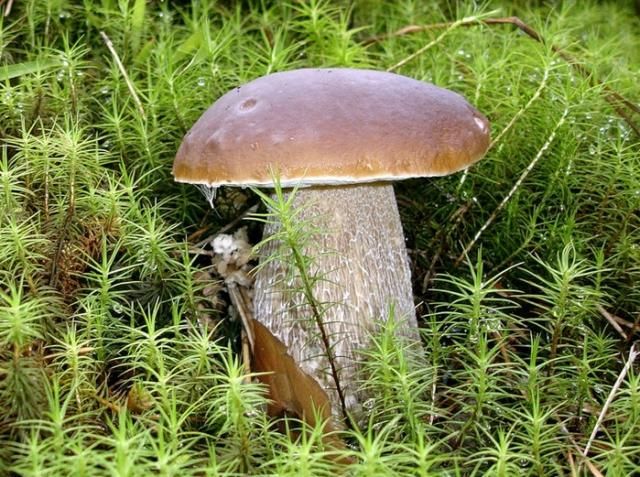|
|
Mushrooms
|
The stalk (also called the stipe, or stem) may be central and support the cap in the middle, or it may be off-center and/or lateral, as in species of Pleurotus and Panus. In other mushrooms, a stalk may be absent, as in the polypores that form shelf-like brackets. Puffballs lack a stalk but may have a supporting base. Other mushrooms, like truffles, jellies, earthstars, bird's nests, usually do not have stalks, and a specialized mycological vocabulary exists to describe their parts.
The way that gills attach to the top of the stalk is an important feature of mushroom morphology. Mushrooms in the genera Agaricus, Amanita, Lepiota and Pluteus, among others, have free gills that do not extend to the top of the stalk. Others have decurrent gills that extend down the stalk, as in the genera Omphalotus and Pleurotus. There are a great number of variations between the extremes of free and decurrent, collectively called attached gills. Finer distinctions are often made to distinguish the types of attached gills: adnate gills, which adjoin squarely to the stalk; notched gills, which are notched where they join the top of the stalk; adnexed gills, which curve upward to meet the stalk, and so on. These distinctions between attached gills are sometimes difficult to interpret, since gill attachment may change as the mushroom matures, or with different environmental conditions.
• Microscopic features
A hymenium is a layer of microscopic spore-bearing cells that covers the surface of gills. In the non-gilled mushrooms, the hymenium lines the inner surfaces of the tubes of boletes and polypores, or covers the teeth of spine fungi and the branches of corals. In the Ascomycota, spores develop within a microscopic elongated, saclike cell called an ascus, which typically contains eight spores. The Discomycetes—which contains the cup, sponge, brain, and some club-like fungi—develop an exposed layer of asci, as on the inner surface of cup fungi or within the pits of morels. The Pyrenomycetes, tiny dark-colored fungi that live on a wide range of substrates including soil, dung, leaf litter, decaying wood, as well as other fungi, produce minute flask-shaped structures called perithecia, within which the asci develop.
|
|









